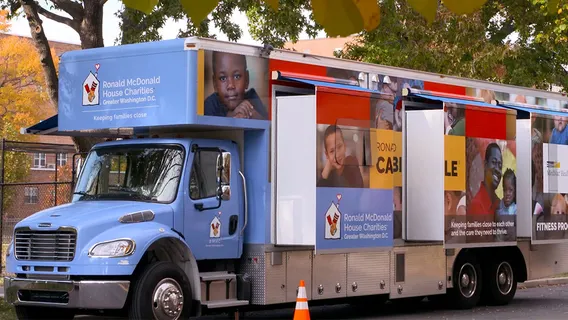Maryland Matters: New data shows that for the past 15 years, the costs of essentials such as food, child care and housing have increased faster than wages of common occupations, meaning that Maryland families, particularly those who are low-income, struggle to pay for basics.
“There has been a failure in this country over the last few years to recognize the working poor,” Michael J. Wilson, director of Maryland Hunger Solutions, said. “That the people who are getting benefits aren’t just those who can’t work because they have kids … or the seniors who we really don’t expect to work — it’s about low-income workers.”
United for ALICE, a partner of United Ways of Maryland, released a new report Wednesday which concluded that household essentials in Maryland have increased an average of 3.1% every year since 2007.
But wages have not kept up, according to the new ALICE Essentials Index, putting those who are “Asset Limited, Income-Constrained, Employed,” or ALICE households, in financial uncertainty especially as concerns about a struggling economy and inflation pile up.
“The ALICE Essentials Index shows that no matter how hard ALICE families and individuals worked, they were priced out of financial stability,” Franklyn Baker, president and CEO of United Way of Central Maryland, said in a written statement. “ALICE was grappling with a surge in inflation before the rest of us.”
The ALICE metric was designed to track how costs of basic needs change over time and how those costs affect low-income households. According to a May report from United For ALICE, there were 899,798 Maryland households that fell below the ALICE threshold, which was an increase of about 70,000 households in 2019, Maryland Matters previously reported.
The ALICE Essentials Index argues that current metrics used to identify impoverished households do not accurately reflect the needs and struggles of thousands of financially constrained families.
On a national level, the Essentials Index includes several basic needs and services, such as housing, food, child care, transportation, health care and technology. According to the report, costs of these necessities in total have risen 53% from 2007 to 2021.
That’s higher that what’s called the Consumer Price Index, which tracks the retail price of more than 200 categories of goods and services and is used to set federal policies and track inflation. According to the Essentials Index, the CPI measure of inflation calculated a rise of 48% in the same period.
United Way argues that the difference is an issue because CPI is used to calculate the Federal Poverty Level, an income threshold that governs whether households qualify for programs such as the Supplemental Nutrition Assistance Program (SNAP), sometimes referred to as food stamps.
ALICE households may not qualify for certain federal assistance even though they also struggle to afford the basics.
In addition, the CPI includes the costs of products and services that may not be deemed essential expenses for survival, concealing the rising cost of basics, according to United for ALICE.
In Maryland, The ALICE Essentials Index rose a 3.1% average annual increase from 2007 to 2023, higher than the rate of increase for the national CPI, which saw a 2.5% average annual increase, according to the report.
“For context, the median wage for a retail salesperson in Maryland increased 2.7% annually from 2007 to 2022 (the latest data available),” the report notes.
While it’s one of the most common occupations, one in three people working in retail sales fell below the ALICE threshold, according to the report.
“In 2021, the rate of increase for retail sales wages caught up to the rate of increase for the CPI and the state ALICE Essentials Index. Yet the sustained lag of wages behind the ALICE Essentials Index equates to a loss of nearly $40,300 over the past 15 years for a retail salesperson — more than a full year’s earnings,” the report stated.
When families struggle to make ends meet, they may have to make difficult decisions to cut costs, said Nonso Umunna, director of KIDS COUNT, an Annie E. Casey Foundation project that follows various trackers of childhood well-being.
“Parents then have to juggle between many different things. …For instance, we know the importance of getting good quality nutritional food for a child’s development, so that means you have to decide whether you have to buy fruits and vegetables, foods that are good for kids, or buy foods that are not very good for children’s development, which are much cheaper,” he said.
He added: “And we’ve seen situations where parents have to forgo certain meals for their children.”
Umunna said low-income families struggle to afford other costs such as housing, child care and health care.
“They also have to make decisions on housing. We know the importance of being in a safe environment, a good environment for a child,” he said. “You might be able to provide a roof over a child’s head, but that doesn’t mean you give them good quality of life.”
Umunna and KIDS COUNT hope that state efforts like the Fair Wage Act, signed by Gov. Wes Moore (D) in the 2023 session, could help thousands of families more easily afford these costs. The Fair Wage Act will increase the minimum wage in Maryland to $15 an hour, starting in January.
But the new report projects that the ALICE Essentials Index will continue to increase. Current projections indicate that the costs of essentials have increased some 5.2% in Maryland from 2022 to March 2023. That’s slightly better than the national National ALICE Essentials index, which is projected to have increased 6.4% during that time period.
By comparison, the National CPI for this same time period shows an increase of 4.8%.
Photo: A new “Essentials Index” shows that wages for lower-income Marylanders are not keeping up with increased costs of living. Stock.adobe.com photo by Piman Khrutmuang.










